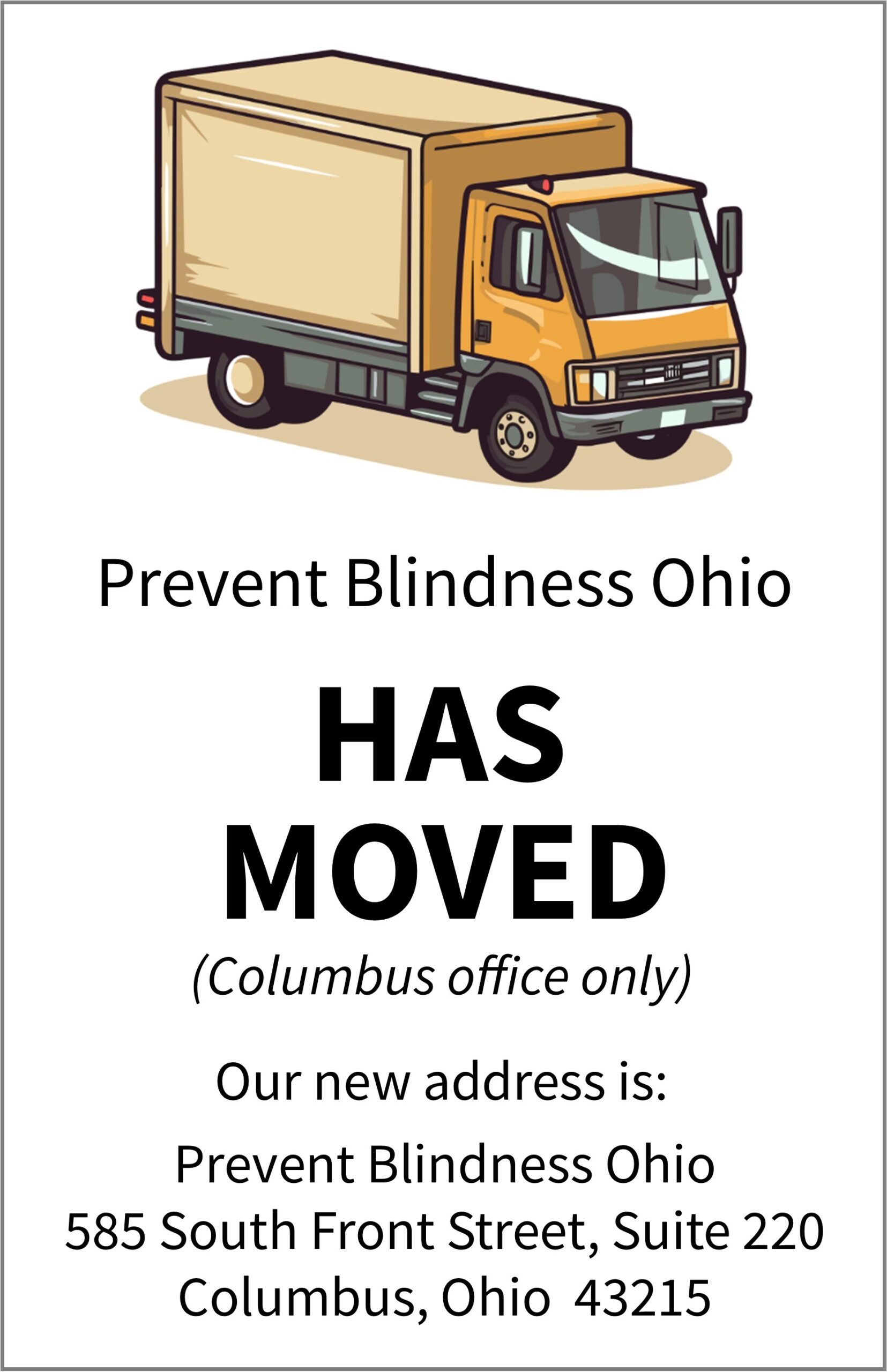
FOR IMMEDIATE RELEASE
For more information:
Dori Jennings
(800) 301-2020 ext.105
[email protected]
November Declared as Diabetes-related Eye Disease Month to Educate
Public on Potential Impact of Vision Loss and Blindness from Diabetes
-Prevent Blindness, Ohio Affiliate Offers Free Resources to Public to
Help Save Sight from Diabetes-related Eye Disease-
Columbus, OH (November 4, 2021) – Diabetes continues to have a profound impact on the health of populations around the world. With the aging population and the significant increase in diabetes cases, the number of people living with diabetes-related eye disease continues to rise. Data from “The Diabetic Retinopathy Barometer Report: Global Findings” from the International Federation on Ageing (IFA), the International Agency for the Prevention of Blindness (IAPB), and the International Diabetes Federation (IDF), shows an estimated 415 million adults living with diabetes in 2015, globally. By 2040, this number is set to rise to 642 million, constituting some 10 percent of the global adult population aged between 20 and 79 years. Additionally, approximately one in three people living with diabetes has some degree of diabetes-related retinopathy (DR), including 294,742 adults age 40+ in Ohio.
Prevent Blindness has declared November as Diabetes-related Eye Disease Month to provide the public with important information on the impact that diabetes can have on vision, and offer tools and programs to help prevent significant vision loss from the disease. The group has created a variety of resources including a dedicated webpage providing detailed information on diabetes-related eye diseases, and downloadable fact sheets in English and Spanish, and shareable social media graphics.
Prevent Blindness has also developed the Diabetes & the Eyes Educational Toolkit with free educational materials on diabetes and the impact of diabetes on eye health in English and Spanish. These educational resources are intended for healthcare professionals, community health educators, diabetes educators, and those in a caregiving or diabetes education role. The toolkit includes fact sheets, presentations and shareable social media graphics.
According to the Diabetic Retinopathy Barometer Report: Global Findings study, those with diabetes have a relatively high awareness of the complications associated with diabetes, and vision loss was by far the most concerning in many countries. Respondents shared that vision loss resulting from DR including Diabetic Macular Edema (DME), can affect their lives in a variety of ways including:
- autonomy and lifestyle choices (one in three had difficulties driving a car; a quarter had trouble working or keeping a job; and even completing basic household responsibilities, such as cooking or cleaning, became difficult for many);
- restricted social life, with many challenges and uncertainties about their ability to travel, to undertake leisure activities, and to interact with family and friends;
- increased difficulty in managing their underlying diabetes, including the ability to exercise; and
- ability to undertake paid work, which has the potential of escalating the economic and social care burden, personally and on a larger scale.
The Centers for Disease Control and Prevention (CDC) states that early detection and treatment, when warranted, can prevent or delay blindness due to DR in 90 percent of people with diabetes. But, 50 percent or more of them do not get their eyes examined or are diagnosed too late for treatment to provide its maximum effectiveness.
“The longer someone has diabetes, the higher their risk for developing DR including DME. As more children are diagnosed with Type 2 diabetes, leading to cases of DR including DME potentially at earlier ages, the need for interventions and treatment as soon as they are appropriate, before substantial vision loss has occurred, is becoming more crucial, said Sherry Williams, President & CEO of the Ohio Affiliate of Prevent Blindness.
Important findings from the new National Institute of Diabetes and Digestive and Kidney Diseases (NIDDK) study “Treatment Options for Type 2 Diabetes in Adolescents and Youth (TODAY),” show that:
- Within 15 years of a type 2 diabetes diagnosis, 60 percent of participants had at least one diabetes-related complication, and nearly a third of participants had two or more complications.
- 51 percent had eye disease.
- Participants who belonged to a minority racial or ethnic group, or who had high blood glucose, high blood pressure, and dyslipidemia were at higher risk for developing a complication.
“Now, with more effective treatments than ever, it is so important for those with diabetes to receive a diagnosis and initiate treatment as soon as it is indicated to maximize vision,” said Dr. Neil M. Bressler, Editor in Chief of JAMA Ophthalmology. “This only can happen if we work together to educate the public, provide access to essential eyecare services and treatments, and continue to fund research that will help put an end to vision loss, including blindness, from diabetes.”
For more information on diabetes-related eye disease, please visit https://preventblindness.org/diabetes-and-your-eyes/ or call Prevent Blindness, Ohio Affiliate at 800-301-2020. For a free listing of organizations and services that provide financial assistance for vision care in English or Spanish, please visit https://preventblindness.org/vision-care-financial-assistance-information/.
About Prevent Blindness, Ohio Affiliate
Founded in 1908, Prevent Blindness is the nation’s leading volunteer eye health and safety organization dedicated to fighting blindness and saving sight. The Ohio Affiliate of Prevent Blindness serves all 88 Ohio counties, providing direct services to 1,000,000 Ohioans annually and educating millions of consumers about what they can do to protect and preserve their precious gift of sight. For more information or to make a contribution, call 800-301-2020. Visit us on the web at pbohio.org, Facebook at facebook.com/pbohio/, or Twitter at twitter.com/PB_Ohio.
###

